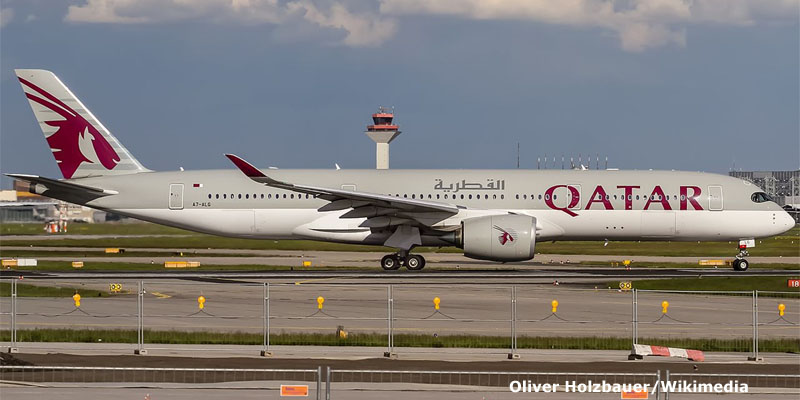A dispute between Airbus and Qatar Airways over paint and surface flaws on A350 jets stretches beyond the Gulf, with at least five other airlines raising concerns since the high-tech model entered service, according to documents seen by Reuters and several people with direct knowledge of the matter.
Qatar’s national carrier has grounded 20 of its 53 A350s, saying it is acting on orders from its local regulator.
Airbus says there is no risk to the A350’s safety – a point echoed by the other airlines, which have not grounded any jets and describe the issue as “cosmetic.”
→ Airbus foresees demand for 39,000 new passenger & freighter aircraft by 2040.
The planemaker said in response to queries from Reuters there had been some problems with “early surface wear” that in some cases had made visible a sub-layer of mesh designed to absorb lightning, which it is working to fix.
Three people with direct knowledge of the situation said that at Qatar Airways and at least one other airline the mesh had in some instances itself developed gaps, leaving the carbon-fibre fuselage exposed to possible weather or other damage.
Asked about gaps in the mesh, it said some airlines were subject to higher swings in temperatures than others, apparently referring, for example, to desert conditions in Qatar.
Two people familiar with the grounding decision said it was based on ongoing uncertainty over the cause and impact of surface degradation and gaps in lightning protection.
→ Qatar Airways and JetBlue Launch Loyalty Partnership.
Airbus says it has found a root cause, but sources with two affected airlines said they had not been notified of one.
The row has set the clock ticking on a compensation battle that sources said could be worth hundreds of millions of dollars after Qatar Airways halted deliveries of 23 more A350s on order.
The clash between two of aviation’s most powerful players became public in May, six months after Qatar Airways sent an A350 to be stripped and repainted in special livery for the FIFA World Cup to be held in the Gulf state next year.
But what for months had been widely presented as an isolated issue related to Qatar’s severe heat is more widespread, according to a private maintenance message board used by Airbus and A350 operators.
Messages show Finnair, which operates in the colder north, raised paint concerns as early as 2016, and reported in October 2019 that damage had spread below to the anti-lightning mesh.
Cathay Pacific, Etihad, Lufthansa and Air France – acting in its capacity as maintenance provider for Air Caraibes – also complained of paint damage.
Following those previously unreported problems, Airbus last year set up a “multi-functional task force,” while studying new material for lightning protection in future A350 jets, two people familiar with the matter said.
Finnair, Cathay Pacific and Lufthansa confirmed some of their A350s had suffered what they described as cosmetic damage. Air Caraibes said it and sister airline French Bee had seen “no major paint problems,” and especially none regarding safety. Air France said its own A350s had operated normally since it began flying them in 2021 and declined to comment on Air Caraibes. Etihad declined to comment.
Analysts say the dispute coincides with efforts by many airlines to reduce their exposure to long-haul jets following the pandemic. Gulf industry sources deny commercial motives for the grounding, noting Qatar badly needs jets for the World Cup.
The unusual partial grounding by Qatar comes at a sensitive time for Airbus as it races to meet an end-year delivery target and as Qatar Airways studies offers from Boeing to replace a fleet of 34 freighters.
Photo: Oliver Holzbauer/Wikipedia
Related Topics
Boeing Receives European Union Approval for Spirit AeroSystems Acquisition
Boeing Delivered 55 Commercial Jets in September, Its Highest Figure for This Month Since 2018
Boeing and Partner Airlines Set New Standard in Aeronautical Parts Authentication
Turkish Airlines Warns It Could Switch Boeing 737 MAX Order to Airbus if Engine Negotiations Fail

Plataforma Informativa de Aviación Comercial con 13 años de trayectoria.




